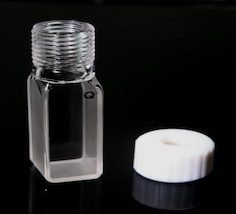Glass cuvettes are unassuming tools in the laboratory, yet they play a crucial role in various scientific experiments, particularly in spectroscopy. These small, transparent containers hold liquid samples for analysis, enabling researchers to study their optical properties with precision. In this blog, we’ll delve into the world of glass cuvettes, exploring their design, applications, and importance in scientific research.
Glass cuvettes, also known as spectrophotometer cells or sample cells, are typically made from high-quality glass or quartz. Their design varies depending on the specific application and the type of spectroscopy being performed. Common shapes include rectangular, square, and cylindrical, each offering unique advantages based on the experimental requirements.
Key Features and Design Considerations:
Glass cuvettes are designed with precision to ensure accurate and reliable measurements.
Some important features to consider include:
- Optical Clarity: The primary function of a glass cuvette is to transmit light without distortion or absorption. High-quality glass or quartz materials are chosen for their optical clarity, allowing researchers to obtain accurate spectroscopic data.
- Path Length: The path length of a cuvette determines the distance that light travels through the sample. Cuvettes with variable path lengths are available to accommodate different sample concentrations and experimental setups.
- Compatibility: It’s essential to select a cuvette that is compatible with the wavelength range of the spectrophotometer being used. Quartz cuvettes are preferred for UV-visible spectroscopy due to their superior transmission in the ultraviolet range.
Applications of Glass Cuvettes:
Glass cuvettes find applications across various scientific disciplines, including chemistry, biology, environmental science, and materials science.
Some common uses include:
- Quantitative Analysis: Cuvettes are used to measure the absorbance or transmission of light by a sample, allowing researchers to quantify the concentration of analytes in solution.
- Kinetic Studies: In kinetic studies, cuvettes are employed to monitor the rate of chemical reactions over time by measuring changes in absorbance or fluorescence.
- Protein and Nucleic Acid Analysis: Cuvettes are utilized in protein and nucleic acid analysis techniques such as UV-visible spectroscopy and fluorescence spectroscopy for characterizing biomolecules.
- Quality Control: In industries such as pharmaceuticals and food and beverage, cuvettes play a crucial role in quality control by enabling rapid and accurate analysis of product composition.
Maintenance and Care:
To ensure reliable results and prolong the lifespan of glass cuvettes, proper maintenance and care are essential. Here are some tips:
- Cleanliness: Always clean cuvettes thoroughly before and after use to remove any residues or contaminants that could affect measurements.
- Handling: Handle cuvettes with care to avoid scratching or damaging the optical surfaces, which can lead to inaccuracies in spectroscopic readings.
- Storage: Store cuvettes in a clean, dry environment away from direct sunlight to prevent degradation of the materials.
Conclusion:
Glass cuvettes are indispensable tools for researchers conducting spectroscopic analyses in various fields of science. Their optical clarity, precision design, and versatility make them invaluable assets in the laboratory. By understanding the principles of cuvette design, applications, and maintenance, researchers can harness the full potential of these small yet powerful devices in their scientific endeavors.

